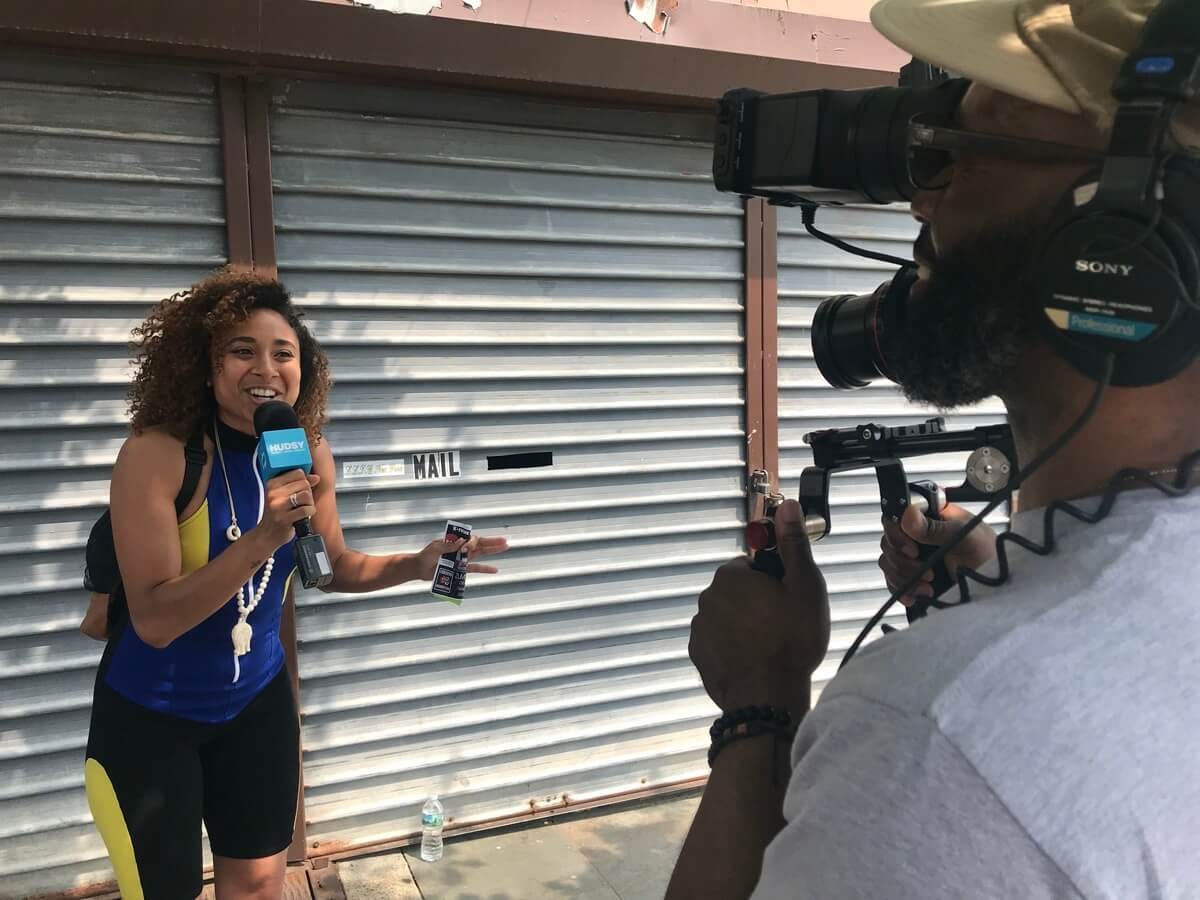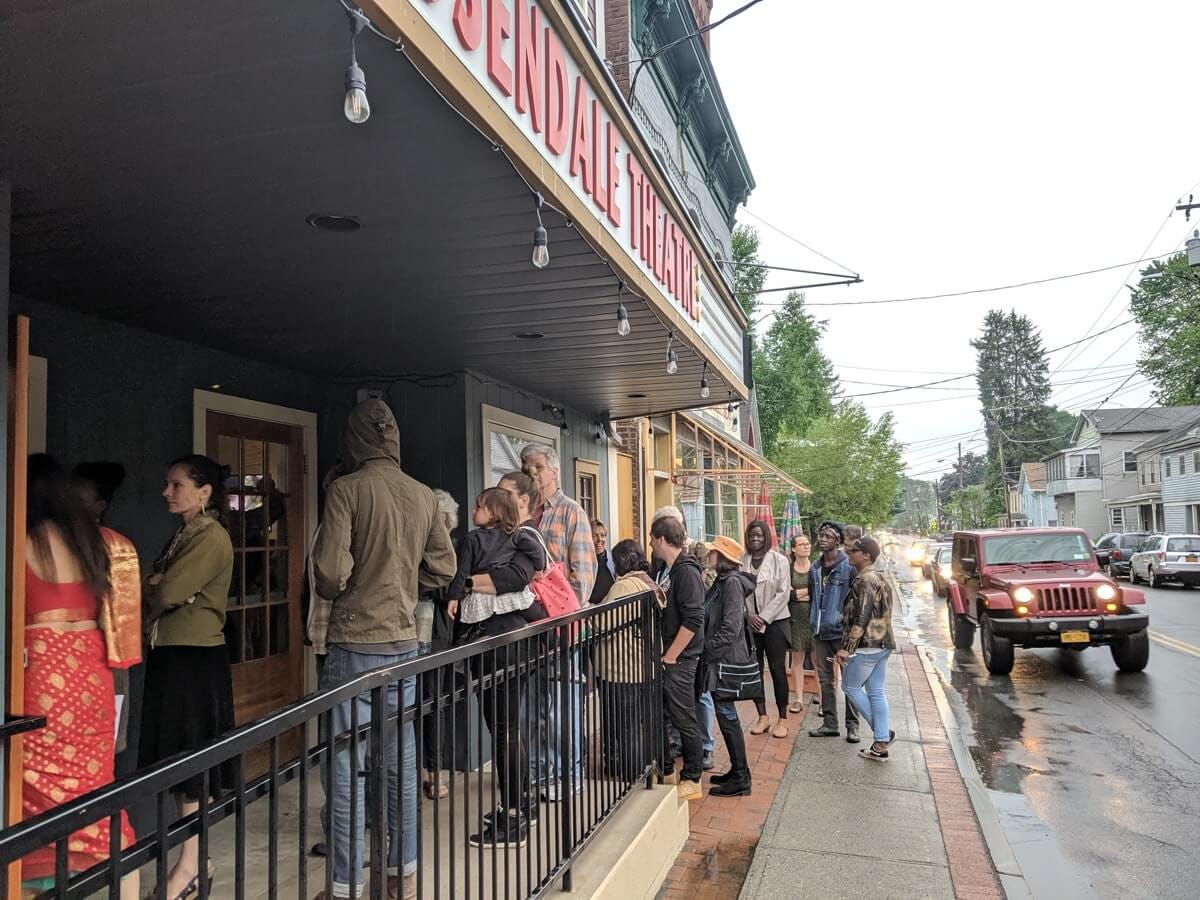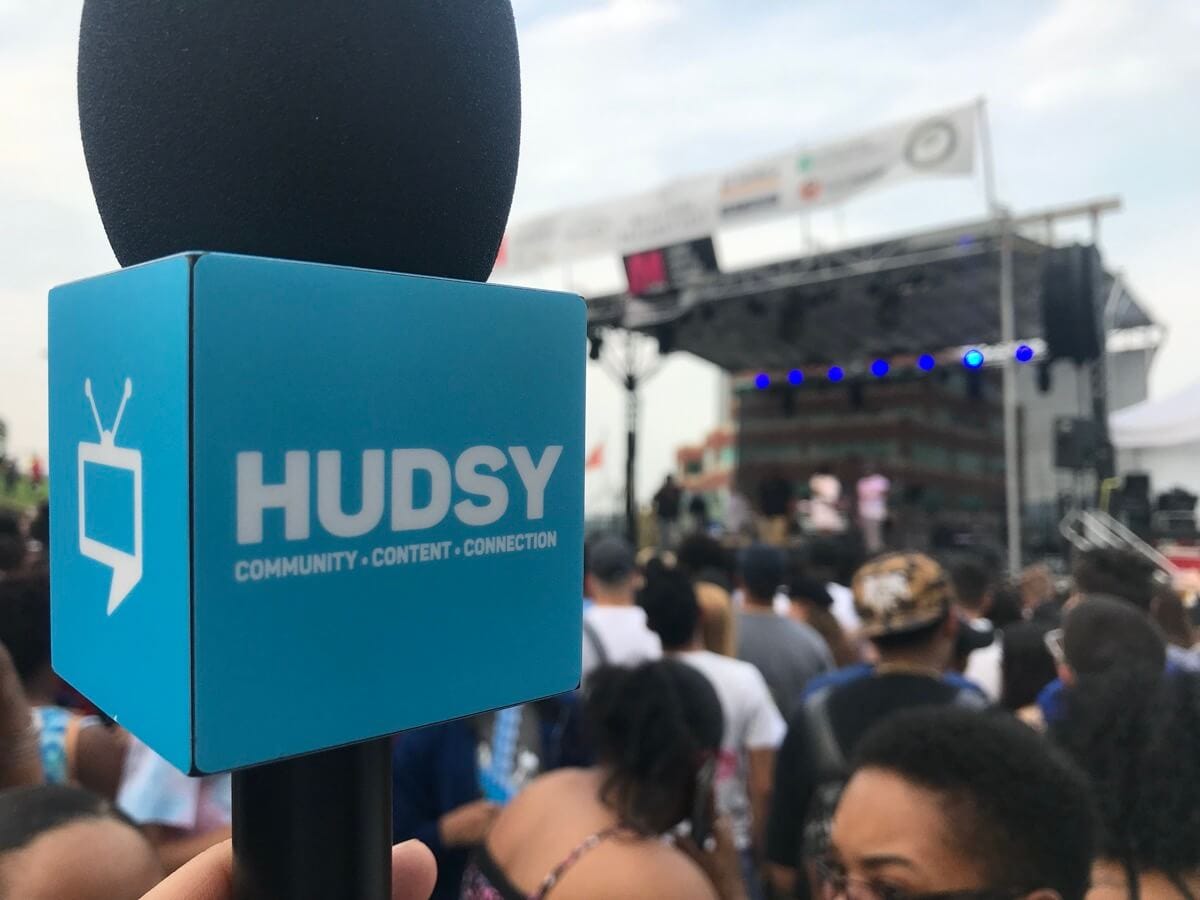Jesse Brown is the co-founder of Hudsy, an online video platform that seeks to provide a local, homegrown alternative to streaming services like Netflix. It features stories made in the Hudson Valley, about the Hudson Valley, and is challenging the usual tech playbook with its egalitarian business model.
I met up with Jesse at the Main Course in New Paltz, where we sat and talked about his whole story — how he grew up in the Hudson Valley, moved to Jackson Hole and started a now-legendary snowboard magazine, returned to New York after 11 years, and eventually found his true calling right back in the Hudson Valley.

Jesse: I was born and raised in the Hudson Valley — literally born at home, to hippie parents, in Stone Ridge. My dad was from Brooklyn, my mom was from Queens, and they came here in one of the first waves that happened in the 60s and 70s to raise their family here.
I went to SUNY Albany for college and spent three years there. The only other school I applied to was University of Colorado at Boulder, and after I graduated from Albany, I still had this desire to go West and see the Rocky Mountains.
My brother and I bought a phone company van, gutted it, added two beds and a CD player, and took it for an 8-week journey around the country. We went to Colorado, Utah, and California. Soon after, my brother’s buddy called and said he was moving to Jackson Hole.
We were like: “We’ve never even heard of Jackson Hole. Why would you want to live in Wyoming? We’re from New York — New York is everything!” I now realize that was a small way of thinking about things. But my brother and I decided to drive to Jackson Hole, and as soon as we saw the Tetons, we agreed: “This’ll do.”
My initial plan was to stay for one winter; I wound up staying for 11.

How did the snowboard magazine get started?
When I first got to Jackson Hole, I thought the same thing that everyone thinks: “I’m going to be a pro snowboarder.” And then you realize there are guys who are super good. It only took a couple of days to realize, no, I am not going to be a pro snowboarder.
What I could be, though, is a filmmaker and photographer. I recognized quickly that if I wanted to be around the sport, that was the thing I could offer — imagery.

I shot photos of a bunch of up-and-coming snowboarders, and once I had a collection built up, I started thinking about selling them to magazines. At that time, the big magazines were mostly based in Southern California or Utah. I remember thinking that was weird — why would we send our Wyoming pictures to California to let somebody outside our community tell us what our valid stories are? There has to be a better idea.
I teamed up with a local pro snowboarder, Lance Pittman, and we started the magazine. My idea was, why not empower ourselves to tell the stories we want to tell, showcase more local talent, and let our pictures really work for us?
The first year, we published a 64-page stapled magazine and gave away 10,000 copies for free, supported by ads from local businesses. The next year we did 80 pages, perfect-bound. And then 96 pages, to 120 pages, to 140. Eventually we were giving away 20,000 copies a year and helping other communities launch their own similar magazines
The snowboard magazine is still going, and just celebrated its 14th year.
How did you get into film?
I’ve always felt very empowered by storytelling. I’m interested in using film and video to break down walls, to connect people and foster empathy, and to allow everyone to share their stories.
After a couple of years living in Jackson Hole, I decided to start taking photos commercially. One day, I was out taking pictures, and I saw 5 or 6 other photographers out taking pictures, but nobody filming. I realized there was an opportunity to shift from photos to video, and so I started doing that too.
I built a kit that I would go out and film with my tripod, and I affixed a remote shutter to my video tripod, and then I would hike my still camera up the hill to take pictures. Every day that I went out, I’d shoot both photos and videos.
The photos were used for the magazine, and the video was paying my bills. I was also waiting tables at night. There were a lot of times where we’d take a snowmobile ride two hours into the back country to do this, and I was the only one who’d have to work a job at 3pm, so in a dangerous setting I’d have to take the snowmobile out by myself 10 miles back to the car, load up, and go to work. I did that for 4 or 5 years, working from 7am to 10pm almost every day.

How did you wind up moving back?
Nine years into my experience in Jackson Hole, I started feeling like something wasn’t right. I was in a good place — I’d worked hard, the magazine was doing quite well, and I was working with some of the best pro snowboarders in the world. But I felt really empty. It was confusing, because I was doing what everyone else told me I was supposed to be doing for success, but I didn’t feel successful at all.
I decided to sell the business and leave. It took about two years to disentangle myself from what I’d created, and then I packed up everything and moved to New York City.
I remember driving across the country, thinking: “What the hell did I just do? I sold the only thing that’s made me money. I built this thing, it worked, and now I have nothing.”
In New York City, I got caught up in making money. I was going, going, going and doing well for myself, but I felt this tug at my integrity: what was I using my art to sell? Then I injured myself. The universe has a funny way of slowing us down sometimes, and in that moment I realized that I hadn’t been living an authentic life. That’s when I decided to leave the city and move back to the Hudson Valley.
All told, I was gone for around 15 years. I’ve been back for four years.
Tell me about Hudsy.
The easiest way to describe it is: Hudsy is Netflix for our region. It’s a storytelling platform that we can populate with local stories, and that Hudson Valley locals can visit and know that these are stories about our region.

There’s over 20 hours of content from over 40 contributors, and we’re adding more regularly. It’s a beautiful slice of what’s being made in the Hudson Valley. There are a lot of nonprofit videos, a lot of music videos, a lot of historical videos. People like Jon Bowermaster of Oceans 8 Films makes incredible work; all of his can be seen on there. My stuff is on there. Videos from Wild Earth. There’s some really rich stuff here.
Hudsy feels the same thing I was doing with the snowboard magazine, but in a different form — it’s celebrating our local community. It’s honoring artists. It’s bringing people together.

I think a lot about how much time we spend talking about the traceability of our food, and how little we spend talking about the traceability of our information. We focus on knowing our farmers and what we’re putting into our bellies, but when it comes to our brains, there’s no accountability and no understanding of where information comes from and who’s behind it.
The beauty of our entire network is that every show and everything that we make is accessible. They’re made by people who live in the same community as you; they breathe the same air and look at the same mountains. There’s something really special about that. We want to build an entire network built around that.
I believe in place, and talking about place. I believe in attachment to place, and I believe that stories are rooted in a place. It’s interesting to me that there are very few story platforms that have been founded around place.

Published on March 3, 2020. This interview has been edited.
